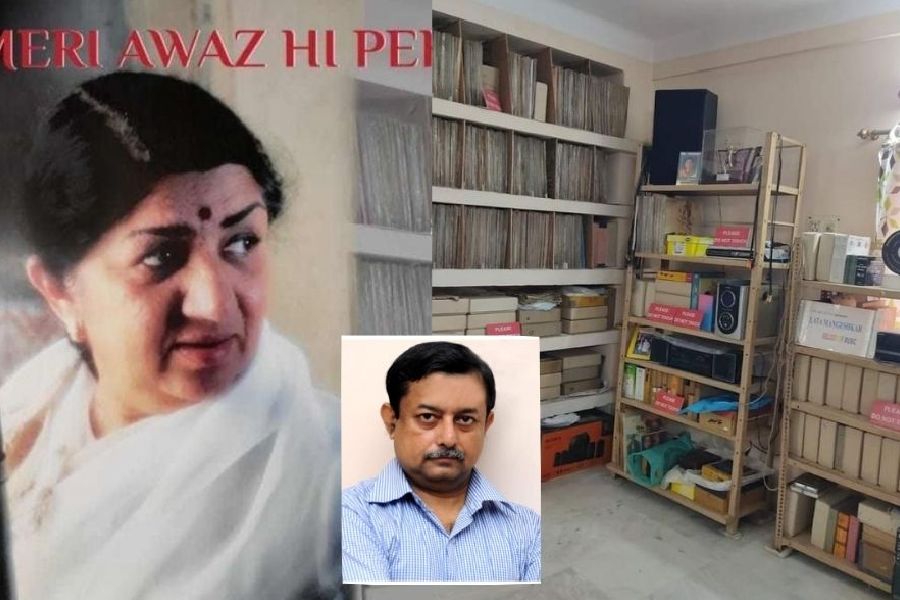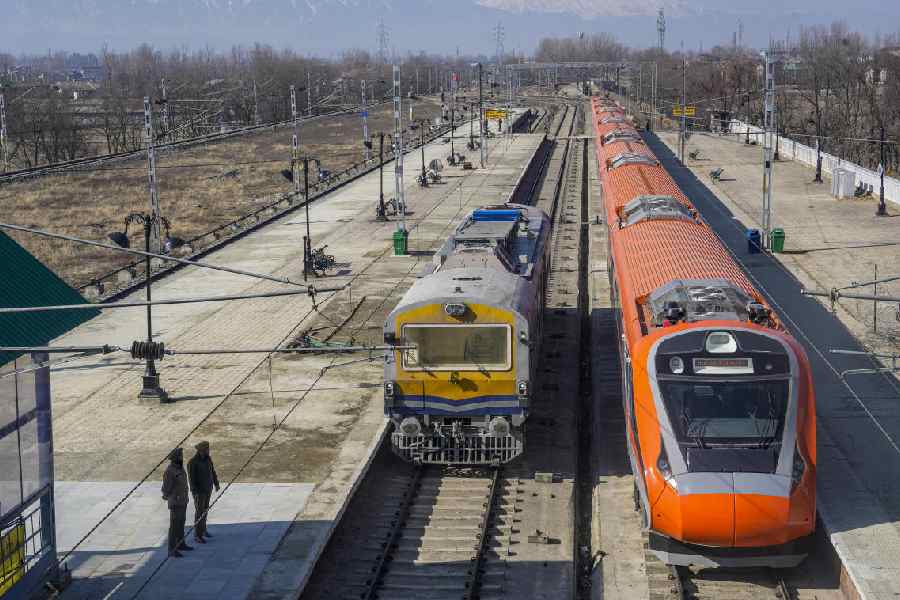A12-year-old boy was out playing football with his friends when a song wafted out of a distant loudspeaker. This was in Nalhati, a mofussil town in Birbhum. As he tells the story in flashback, the voice, its melody sends him into a trance of sorts. He sings the song, etched in his memory, with eyes closed — “O babul pyare… nis din tujhe pukare mann...”
“I didn’t know who the singer was,” recalls Snehasis Chatterjee, 62. It was much later that he came to know that the voice belonged to Lata Mangeshkar, and the song was from the Hindi film Johny Mera Naam.
That was the beginning of Chatterjee’s journey to create Lata Geetkosh, a compendium of songs performed by Mangeshkar, complete with lyrics, names of lyricists, composers and other relevant details.
The 15th and final volume of Lata Geetkosh will be released this month, to mark the 95th birth anniversary of the singer.
Since 1983, Chatterjee has hunted down complete lyrics and details of 6,738 songs sung by Mangeshkar in as many as 38 languages. He travelled to several cities, listened to the singer’s live programmes and exchanged notes with other fans.
Chatterjee points out that some of the songs he collected were never released in the public domain.
The number of songs recorded by Mangeshkar has always remained a matter of debate. According to some reports, the artiste had recorded about 25,000 songs, while some others put the number at 50,000.
Mangeshkar herself never cared about the count. She had no record of unreleased songs that languished in obscure corners of studios. “I appeal to film production houses, music directors and music aficionados to come forward and share such lost songs with me,” he says.
Chatterjee’s archive in Serampore has a collection of around 3,000 records and hundreds of audio cassettes, compact discs and digital video discs of Mangeshkar’s. The archive shares space with his music school. He makes weekly visits to the school to give music lessons to a few students.
Collecting materials for the books hasn’t been easy for Chatterjee, especially in the early years. Songs played on the radio were his only source of infor-
mation those days. In Nalhati, they couldn’t access most of the radio stations, except Radio Ceylon or Radio Nepal and that too occasionally.
Later, when he joined Rampurhat College near his home for higher studies, Chatterjee got acquainted with a record store owner. “I didn’t have the means to buy vinyl records, but the owner let me listen to Lataji’s songs and note down the lyrics,” he says. He also found bits of information on the song on the record labels.
Much later when he joined Sarva Shiksha Mission, the government’s education project, he was able to buy old records, audio cassettes and CDs from various stores. He says, “My family firmly supports my mad pursuit. In the beginning, it was my parents and then my wife, and now my son and daughter-in-law encourage my work.” His wife Jyotsna, a professor of Bengali, is proud of her husband’s passion.
The late Surajlal Mukhopadhyay, better known as Haru Babu, has played a role in Chatterjee’s interest. He taught Chatterjee how to collect data from records, song booklets, books, newspapers and periodicals and organise them into a proper catalogue.
Chatterjee self-published 30 copies of each of the compendiums. The first copy would invariably be presented to Mangeshkar herself. She was particularly excited when she received the 12th volume of the Geetkosh, which is a collection of her Marathi
songs. “She was excited to see her picture from the 1943 movie Maze Bal in which she had acted,” says Chatterjee.
“I was one of those rare people who had access to her home telephone,” he adds proudly. He called her occasionally and soon discovered that to maintain privacy, the singer changed her phone number every six months. He points to a picture on the wall of his home in Dum Dum; in the photograph, he is seen beside his idol. The glass cabinet next to the picture is crowded with medals, shields and statuettes he has received as tokens of appreciation from various organisations.
And while it is true that Chatterjee receives wide appreciation for his extensive catalogue, it is also a fact that he was at the receiving end of much criticism.
A lot of people made fun of his pursuit. Some of them doubted the authenticity of his catalogue. To address the last, Chatterjee would request celebrities to endorse or write a foreword for each of his books.
Manna Dey, Kavita Krishnamurthy and Yash Chopra are some of those who obliged. He received the most encouraging words from music director Salil Chowdhury.
Chatterjee is confident that Lata Mangeshkar will be the subject of many research projects in India and abroad. He says, “Volumes of my Lata Geetkosh will surely serve as a source of basic data for those researchers.”
And then he hums: Rahen na rahen hum, mehka karenge banke kali banke sabaa...










